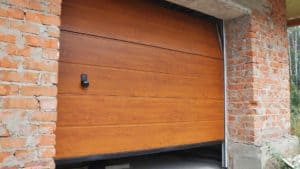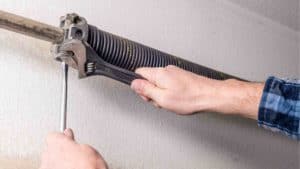A garage door may only be one part of your home’s features, but it can be a major inconvenience when it doesn’t function properly. Without it, you may find a garage vulnerable to the elements and potential intruders.
If your garage door won’t close, it’s best to understand what’s causing the issue and take the necessary steps to fix it. At Garage Door Repair, we look at your garage door’s role in keeping your home safe and secure and help you get it back on track.
Reasons a Garage Door Won’t Close All The Way
It can be frustrating when you can’t figure out why your garage door won’t close. If you’re currently dealing with this problem, here are some of the most common garage door-related damages and issues you should check on:
1. Obstructed Door
Garage doors work by using sensors to determine if an object is in the way of the door closing. If there is anything blocking the sensor, even if it’s not in the way of the door closing, this will cause the door to have issues closing.
There’s always a chance that something as simple as a piece of furniture could be getting in the way of your garage door. Take a look around or inside the garage to see if there are any potential obstructions.
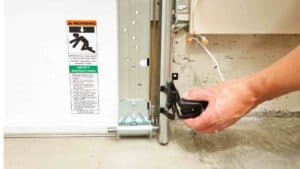
2. Malfunctioning and Misaligned Safety Sensors
Your garage door has built-in safety sensors. When garage doors close, these sensors detect any objects in the path of the garage and will stop the garage from closing. If these sensors aren’t working properly, your garage could be stuck open or unable to close completely.
Similar to the solution above, first check if anything is in the way of the sensor. If you have determined that nothing is blocking the sensor, it might be that the sensors themselves are out of alignment.
Here’s a simple way to check: take a look at the exterior LED light when you press the button to close the door. If the light is green, your sensors are in good shape. But if the light starts flashing red, that means the sensors need some attention. Don’t worry, it’s a quick fix! Just inspect the bracket or tighten a screw on the flashing sensor. Once you’ve done that, the red light should turn green, the flashing should stop, and your garage door should close smoothly once again
If this doesn’t fix the issue, it’s time to check the lens itself. Sometimes all it takes is a quick wipe with a clean cloth to get them back in working order. These sensors play a crucial role in keeping your garage door functioning smoothly, but dirt, spiderwebs, and other debris can cause them to fail.
By simply giving the lenses a quick cleaning, you can ensure that your door operates without a hitch. If you live in a particularly dusty area, make sure to give your sensors a regular clean to keep them functioning perfectly.
Lastly, check the wires connecting your garage door to its sensor. Your garage door sensor system’s wires are your trusty connection to the outside world, but with all the wear and tear from regular use, inclement weather, and even pesky critters, they might start to show signs of wear and tear.
Don’t worry, though! If you see any signs of water damage, chew marks, or other suspicious tampering, you can easily replace the wires and keep your garage door sensor system in tip-top shape.
3. Damaged Springs
There are two main types of garage door springs, extension and torsion. Extension springs are mounted on the sides of the track, extending and contracting when the door is in motion. Torsion springs on the other hand run horizontally and hold two cable drums at each end – the torsion spring plays a crucial role in the smooth opening and closing of your garage door.
Although they are different, they serve the same purpose. Storing tension when the door is closed and releasing it when you lift the door open.
This means that most of the time, your garage door springs are under tremendous tension. Overtime materials will break down and eventually the springs will break.
If this has happened to you, don’t worry, the pros at Garage Door Repair know how to fix it and will have your garage door springs working in no time at all.
Additionally, if you do decide to take on the project yourself, the video below provides a wonderful explanation on how to do so.
4. Damaged Cables
Depending on the type of spring system your garage door uses, extension or torsion, the location of your cables will change.
In the case of a torsion spring system, the cables are connected to the door drum on each side of the shaft and work by rotating a winding cone to lift the door. When the door lowers, the process reverses.
On the other hand, the cables on an extension system are located inside the springs a to prevent any broken spring pieces from causing damage or harm.
Your garage door cables are hardworking components that help you open and close your garage door smoothly and effortlessly. However, just like anything else that’s used repeatedly, they can experience wear and tear and eventually break.
Age, rust, incorrect installation or configuration, and even an accidental bump can all contribute to the breakdown of your garage door cables. Fraying and pulley wear are also common issues.
Regular maintenance, careful usage, and quick repairs can help prolong the life of your garage door cables and keep your garage door functioning at its best.
If you have found yourself with broken door cables, be sure to reach out to a professional installer who can safely secure your garage door for years to come.
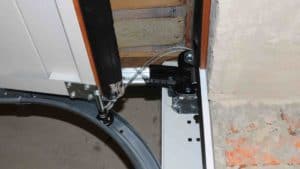
5. Damaged Tracks
Fixing a bent garage door track may seem like a DIY project, but it’s best to call in the experts. Trying to fix it yourself with tools and videos may only lead to bigger problems and even injury.
The professionals have the expertise and equipment to get the job done right, ensuring a smooth and safe operation for your garage door. Don’t risk making things worse, leave it to the experts to get your garage door back to its best.
Fix Garage Door Problems With Garage Door Repair
When a garage door won’t close, homeowners naturally want to fix the issue themselves. You can clear the way, set the limits, and clean and lubricate the parts. It’s possible, but garage door repairs require specialized tools and expertise. Depending on why your garage door won’t close, you can take the matter into your own hands or call garage door specialists for help.
If it’s simply a blockage or misaligned safety sensors, you can usually troubleshoot and solve the issue on your own. But if it’s beyond your skill set, it’s time to call the professionals. At Garage Door Repair, we work with professionals who identify the problem, fix it quickly, and get your garage door working again in no time.
We help homeowners with garage door issues of all kinds. Whether you need garage parts, replacements, or other garage door services, we can help. Your garage door is vital to your home and family’s security, so let’s help you make the most of your investment. Contact us now!
Whether you have a detached garage or a garage built into your home, your garage door is a barrier between where you’re safely parked and any inclement weather that may arise as seasons change. From scorching summers to snowstorms, your garage door has a weather seal that works overtime to keep weather changes outside. So, how do you know when it’s time to get a weather seal replacement in your garage? Are there any telltale signs to look out for, or should you replace your weather seal as preventative maintenance? Follow our expert tips at Garage Door Repair to find out!

Sign #1 Your Garage Door Needs a Weather Seal Replacement
If you’ve noticed that your weather seal strip is worn or damaged, it’s time to get a replacement. A worn-out weather seal may not be as effective as it used to be, resulting in drafts impacting the temperature within your garage and even leaves or debris from the outdoors getting inside. A few indicators can help you determine when to replace your weather seal strip. First, you’ll want to step inside your garage and glance at the bottom of your garage doors. If you can see any light filtering in from underneath the door or there are visible signs of damage, it’s worth replacing.
Sign #2: Debris, Leaves, Rain, and Snow
If you’ve noticed an endless stream of debris, leaves, rain, and snow entering your garage year-round, it’s time to get a weather seal replacement. At Garage Door Repair, we offer weather stripping, bottom, and threshold seal replacement so that you can get what you need the most. Our vinyl rubber seals are built to withstand the harshest temperatures and weather conditions to keep your garage door in the best condition for as long as possible.
Sign #3: Bugs, Snakes, Crickets, Mice, and More
If every time you step foot into your garage you notice an influx of pests, it may be time to replace your weather seal strip. When your weather seal strip has become so worn on your garage door that it allows pests to enter your garage, it’s vital that you replace your seal for your family’s safety. While it may not seem like a big deal to have pests entering your garage, they can cause more problems and damage than you may realize. In addition, replacing your weather seal strip is more affordable than hiring pest control!
Garage Door Repair is Your Source for All Garage Door Repair Needs
At Garage Door Repair, we’re your source for all your garage door repair needs. From garage door weather stripping to springs, cables, openers, rollers, tracks, parts, door and panel replacement, to more, we’ve got you covered. We offer residential and commercial garage door repair to cover a broad range of garage door repair needs. We even offer maintenance plans. We have convenient locations across the nation with 24/7 support, expertly trained technicians, and we are fully licensed and insured. Contact us today through our website or a location near you.
How to Know When It’s Time to Repair or Replace Your Garage Door
Out with the old, in with the new! That’s one way to look at things, but while familiar sayings may ring true, there’s usually more to decision making than that. The important thing to remember is that any time you have to make a choice there are several things to consider, things unique to you and your set of circumstances. Evaluating your wants, needs, and desires, tempered with practical considerations, can help you get the best results. Your garage door is damaged. Sure, you want the door to work properly. You need to be able to live and work as you did before. And like most people you desire the best, newest, safest, quietest garage door available. There are several ways to approach this.
Signs You May Need a Replacement
Example #1: Car versus door leaves you with a dented section.
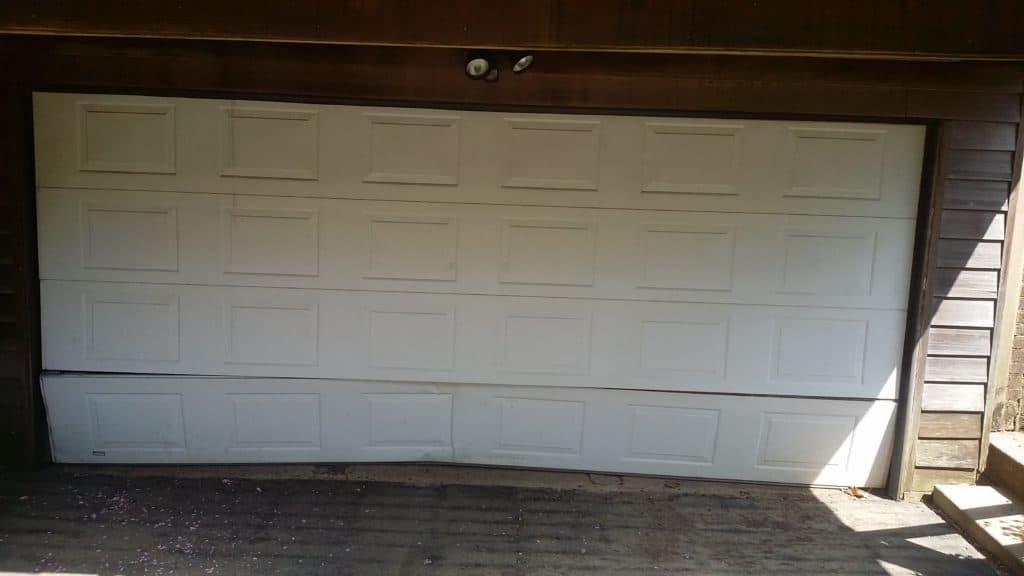
Some considerations:
- Proper, safe, section replacement by homeowners is usually not practical. In many cases a section replacement may be half the price of a new door.
Get a new door. This gives you a chance to have the latest features, perhaps better insulation, new color choices, better weatherstrip, maybe a row of windows. You’ll have a new warranty too. - What if you have two doors on your garage and the new product won’t match the old? As well, a replacement section may not look exactly the same as the rest of the door due to the natural fading which, depending on the age and location of the door could be very noticeable.
- If the door has had a lot of use, wear parts like rollers and cables may cause trouble and expense in the future.
- Have you had a number of service calls in the past? Springs have a limited life and can fail after a specified number of cycles–maybe not long after you replace the damaged section.
- How old is the door? How old are you? (Sounds funny, but consider this for all major purchases.)
- Do you plan to stay in the house?
- What was the condition of the door before it was hit? Have you already had a service call because of the accident?
Signs You May Only Need a Repair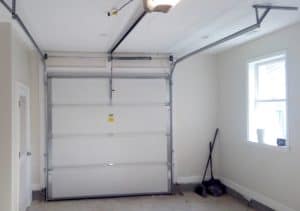
Example #2: The door does not work properly.
Some considerations:
- Inspect the door, inside and out, for obvious defects like broken cables or springs.
- While the door is in the down position, disconnect it from the operator, if applicable. Open the door. If it is heavy, or noisy, return it to the closed position and lock it in place. Have your Garage Door Repair technician check the door.
- If there are major problems, the same principles shown above apply: How old is it, overall condition, how often it’s used, your plans to stay in the house, etc. In many cases a simple repair is the best way to go.
- The door may not be connected to the operator drawbar arm.
Example #3: Your operator is not working.
Some considerations:
- There may be loss of power to the unit.
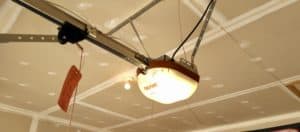
- Photo eyes may be dirty or out of alignment. Note: that service technicians will not repair any operator that does not have external safety devices, such as photo eyes, making total operator replacement the only option available to the homeowner.
- There could be an obstruction in the opening.
- The problem may be with the door, not the operator.
- The low voltage wiring to the wall button may be loose or broken.
- Transmitter batteries may be weak. Light bulb replacement is an easy task.
- With an operator, the age of the unit is a major consideration since there is ongoing improvement in the technology available that gives owners more convenience and security than ever before. Unless there is a very simple fix, operator replacement and the benefits to the homeowner make this an easy choice.
Let Us Help
Decision time. Ask yourself what’ll you have when the job is finished. In summary, because of the tools and techniques needed there’s little a homeowner can safely do to fix a door problem, so whether to fix an existing door/operator, or installing new equipment is a question of value. Calculate this by looking at the facts, list the pros and cons and see what will be the best choice for you. Often one of these–the pros or cons–will far outnumber the other.
At GarageDoorRepair.com, we connect you with local garage door repair experts from around the country. Find a locally licensed company with highly-trained technicians who can provide garage door repair replacement services in both commercial and residential settings.
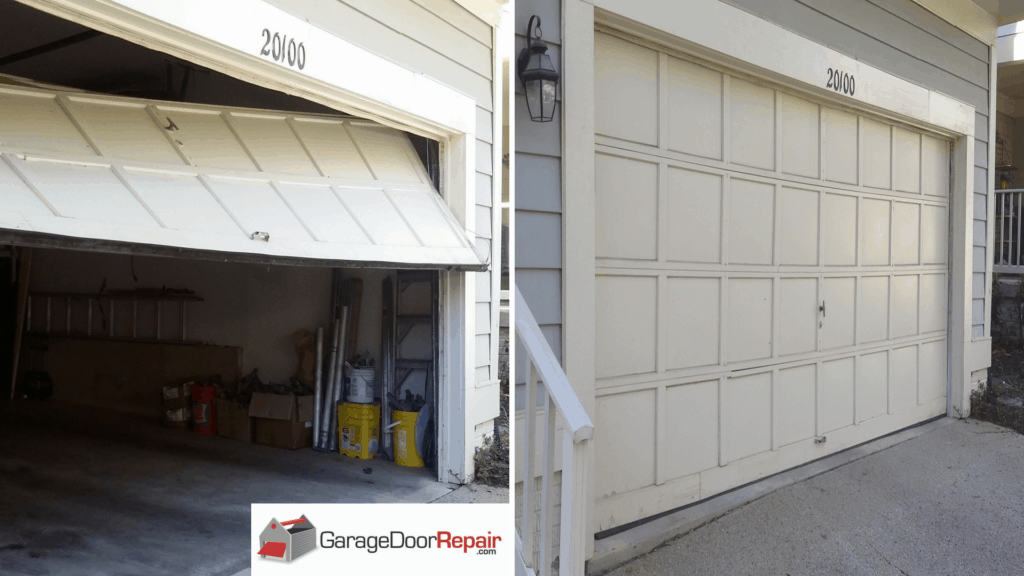
Changes that you make in your garage can save energy and improve your home’s environmental profile. Attached garages serve as conduits for heating and cooling losses in the home, and fumes can leak from the garage into living areas. Hazardous materials often collect in garages where they get spilled or forgotten, and can harm pets or pose health threats. Many household pests make homes in cluttered garages, and the best way of preventing infestations on your property is to control garage areas with preventive measures, regular cleaning and environmentally safe pest-control products.
Resist turning your garage into a storage facility, because most people accumulate junk that they will never use. Garages become physical hazards to health, and finding useful items becomes nearly impossible when things aren’t labeled and stored properly. Making your garage green is one of the easiest ways to lower energy and utility usage, reduce your carbon footprint and ensure safety in the home. Here are six tips for greener garages:
1. Change Light Bulbs or Fixtures
Incandescent lights consume more energy than most people think, but you can replace traditional bulbs with energy-efficient LED lighting or CFLs. If you use your garage as a workshop, consider installing task lighting to reduce energy costs while providing enough light to work safely.
2. Green the Doors in Your Garage
Most garage doors are relatively flimsy, so garage-door insulation becomes important for conserving energy and preventing outdoor air from leaking into garages and attached homes. Energy Star recommends using well-insulated garage doors with R-values between 13 and 17.5 percent. These types of doors come with built-in insulation while most garage doors use polystyrene materials that only have R-values in the 5 to 7 range. Other energy-saving ideas for your garage doors include the following green practices:
– Seal cracks and install weather-stripping to prevent hot and cool air from getting in or out of your garage.
– Choose doors made from recycled content to promote the responsible use of resources.
– Keep automatic garage doors in good working order to reduce the time that doors remain open, which prevents heat or cool air from escaping.
– Caulk around any doors from the garage to your home or yard, and check for leaks in windows and doors.
3. Install a Ventilation Fan
An exhaust or ventilation fan prevents stale garage interiors, circulates air more efficiently and helps to disperse dangerous fumes in garages caused by petroleum products, cleaners and chemicals.
4. Handle Hazardous Materials Safely
Many people store hazardous materials in their garages that they never use, which pose a risk of spills, off-gassing, and poisoning pets and children. Paints, chemical solvents and petroleum-based products are among the top hazards to healthy living, according to the DIY Network. Pesticides, auto fluids, paints and other chemicals can leak, pose fire hazards, generate toxic fumes, and cause burns and respiratory problems. Eco-friendly chemical storage practices in the garage include the following habits:
– Road salt and ice-melting compounds can cause pets to develop diarrhea and vomiting, so keep these products secure.
– Antifreeze smells sweet, and as little as one tablespoon can kill a cat, so wipe spills immediately.
– Consider transferring chemicals to a shed set aside for that purpose.
– Keep your garage clean and uncluttered by recycling materials, organizing tools and work areas, and making sure that chemicals don’t filter into the ground or air.
5. Building, Decorating and Insulating Materials
Use energy-efficient building materials for garage structures, doors and windows. Learn how to insulate your garage in an eco-friendly way:
– Insulate pipes, water heaters and ductwork to make garages weather-tight.
– Caulk between floors and garage walls.
– Insulate garage walls and ceilings with the right R-value insulation.
– Replace older windows with Energy Star-certified versions.
– Consider installing solar panels to make your garage self-heating.
– Use eco-friendly paint to avoid the volatile organic compounds found in regular paint.
– Hose down garage floors regularly to remove road salt, slip hazards, stains and auto fluids.
– Monitor garage walls and foundations for cracks, moisture, mold and discoloration.
6. Conserve Water for Washing Vehicles
You can collect rainwater from your garage roof to wash vehicles, clean the garage and even water your lawn. Simply channel water from the roof into a rain barrel, and use the water for any number of purposes around the house, such as washing pets and cleaning sidewalks and patios.
You can reduce energy usage, increase comfort, protect your family and prevent environmental damage by making your garage greener. Most people don’t think about the garage when looking for ways to reduce their carbon footprint, but garages provide many opportunities for practicing green habits.
Spring is finally here, and with it comes the desire to get things clean. Over the winter your garage has taken a beating. The Christmas lights may be piled up in the corner, while leaves and salt have cluttered up the floor. Now that the temperatures are warming, it’s time to start thinking about garage maintenance. Here are the steps to take to get your garage in great shape again and ready for summer cookouts and family fun.
Tackle the Clutter
The garage is a place where things tend to accumulate and stay, unused, for years. On a warm morning, remove everything from the garage. Analyze each item and determine if it has been used in the last three years. If not, toss it or slate it for a garage sale in the future. Keep in mind that toxic items, like old paint or batteries, must be disposed of safely.
Clean the Floor
Proper garage maintenance means you’ll spend some time on your floor, which is likely pretty grimy after winter. While you have the garage empty, sweep and wash the floor. The winter brought in a lot of gunk, and this is the time to get it out.
Check the Door
Before you start reloading the garage, give the door and the opening system a visual inspection. Look for any obvious signs of wear and tear, such as worn springs or rails. Open the garage a couple of times and watch the system work to ensure it is functioning as it should be.
Test the safety features by placing something on the floor, out of the line of the photo eye sensor, to ensure that the door reverses when blocked. Then, place something in the way of the photo eye sensor to ensure that the door will not engage.
Spring cleaning is an excellent time to lubricate the moving parts on the door. Apply a spray lubricant to tracks, rollers and hinges to keep it functioning well. This garage maintenance step should be performed a couple of times per year.
Reload the Garage
When you put your things back in the garage, do it in zones. Put similar items together in logical places. The broom, for example, should be by the kitchen door. Invest in peg boards, shelving and cabinets to keep tools organized. Any items in boxes or tubs that cannot be seen should have labels.
If over the course of your spring cleaning you notice that your garage door needs help, GarageDoorRepair.com is ready to be at your service. Contact us today to find a qualified garage door repair professional in your area who can provide the service you need.
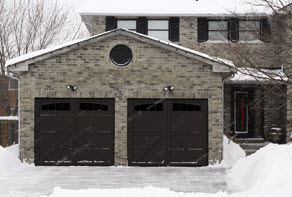 When temperatures start dropping, your garage becomes more than a place to simply store your vehicle; it becomes your first respite from the chill. When a garage door is malfunctioning due to the cold, it is going to keep you from safely pulling your vehicle inside. Unfortunately, cold weather garage door problems are very common. By knowing what problems you may be encountering and how to approach them, you can be back by the fireplace in no time.
When temperatures start dropping, your garage becomes more than a place to simply store your vehicle; it becomes your first respite from the chill. When a garage door is malfunctioning due to the cold, it is going to keep you from safely pulling your vehicle inside. Unfortunately, cold weather garage door problems are very common. By knowing what problems you may be encountering and how to approach them, you can be back by the fireplace in no time.
Common Garage Door Problems:
Excess Grease
Excess grease on your garage door tracks is a problem that can occur any time of the year, but it can really start causing issues in the winter. Too much lubrication can throw your rollers out of alignment, making it difficult for the door to open and close smoothly. Finding the balance between enough lubrication and too much is one of the most important parts of garage door maintenance.
Contracting Metal
Certain materials contract when temperatures dip below a certain threshold. Metal is one of these materials, meaning that it’s not uncommon for a garage door’s springs, screws and other metallic components to shrink and seize up in the winter months. You can’t keep this phenomenon from happening, but you can mitigate its effects by adding more lubricant. Apply plenty of garage door oil to the springs, the torsion ball bearings and the screw drive. Keep oil away from the tracks to avoid the first problem mentioned.
Thickening Grease
Most lubricating greases are designed to operate under extremely hot conditions. This is what makes them so effective in the high-power conditions found in engines. Unfortunately, lubricants don’t necessarily work as well when subjected to the cold. Low temperatures can harden grease, thickening it to the point where it makes a very poor lubricant. Make sure this hasn’t happened in your garage door. Remove old, hardened grease with an applicable solvent, and replace it with a silicone-based oil for better winter results.
The best approach to preventing garage door problems in the winter is to stay on top of regular maintenance. Regular lubrication, consistent cleaning and careful usage should keep your garage door functioning until spring arrives.

